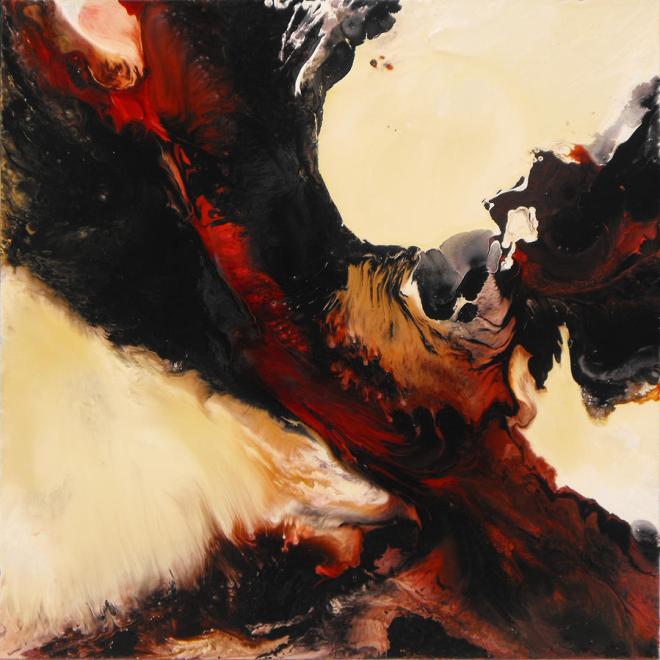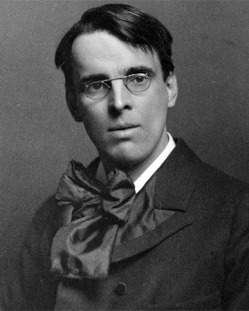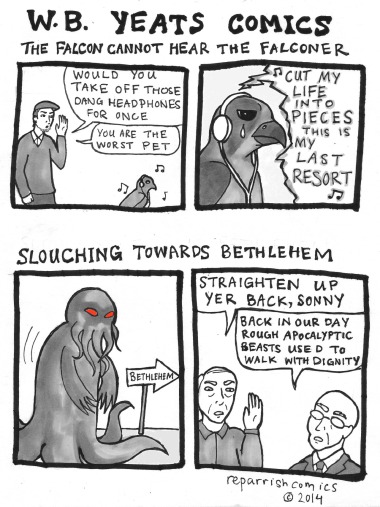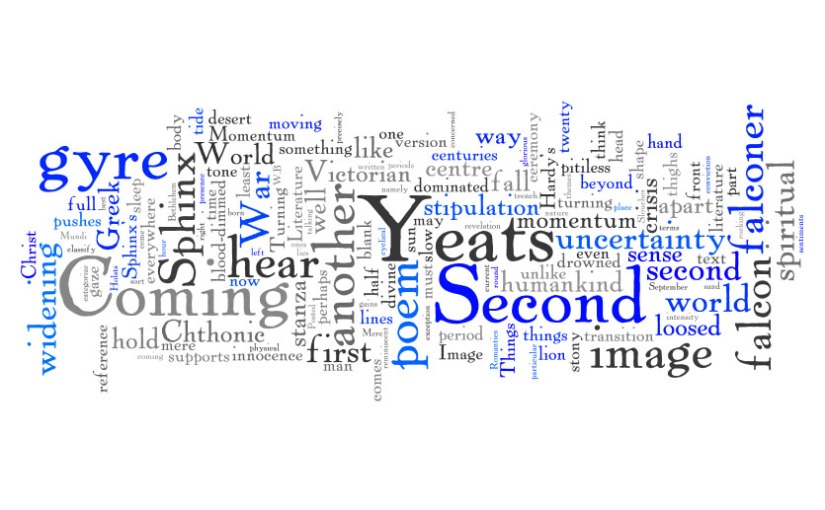The Second Coming
Turning and turning in the widening gyre
The falcon cannot hear the falconer;
Things fall apart; the centre cannot hold;
Mere anarchy is loosed upon the world,
The blood-dimmed tide is loosed, and everywhere
The ceremony of innocence is drowned;
The best lack all conviction, while the worst
Are full of passionate intensity.
Surely some revelation is at hand;
Surely the Second Coming is at hand.
The Second Coming! Hardly are those words out
When a vast image out of Spiritus Mundi
Troubles my sight:somewhere in sands of the desert
A shape with lion body and the head of a man,
A gaze blank and pitiless as the sun,
Is moving its slow thighs, while all about it
Reel shadows of the indignant desert birds.
The darkness drops again; but now I know
That twenty centuries of stony sleep
Were vexed to nightmare by a rocking cradle,
And what rough beast, its hour come round at last,
Slouches towards Bethlehem to be born?
By: W. B. Yeats (1919)

Synopsis:
The Speaker thinks that the recent outbreaks of wars and revolutions means that the world is finishing a cycle and the Second Coming is approaching.
Major Themes and Motifs:
- Christianity
- War
- Militarism
- The Cyclical Nature of Humanity
- The End of a Era
Literary Terms Applicable to “The Second Coming”:
- Allegory
- Alliteration
- Allusion
- Ambiguity
- Caesura
- Character
- Characterisation
- Connotation
- Denotation
- Diction
- Figurative Language
- First Person Narrative
- Hyperbole
- Imagery
- Literal Language
- Metaphor
- Meter
- Metonymy
- Modernism
- Mood
- Motif
- Register
- Repetition
- Rhythm
- Setting
- Simile
- Speaker
- Stanza
- Structure
- Symbol
- Symbolism
- Syntax
- Theme
- Tone
- Visual Imagery
Characters:
(in order of appearance)
The Speaker-
He views the world as falling apart as it cascades into bloodshed and insanity due to wars and revolutions. The amount of violence that occurs is too much for the Speaker to cope, and so he makes the assumption that this is The Second Coming, the end of a 2,000 year cycle. After reaching that conclusion, he imagines a sphinx rising up and running to Bethlehem to be born.
The Sphinx-
Presumably influenced by the Great Sphinx of Giza, the Sphinx appears to the Speaker. He is described as having, “A shape with lion body and the head of a man” (Yeats, 14). The sphinx has rested in the desert for more than 2,000 years before he wakes up and runs towards Bethlehem to be born.
Detailed Description of the Events within the Poem:
- The 2,000 year cycle is coming to a close.
- The world is falling apart with anarchy ruling.
- “The blood-dimmed tide is loosed, and everywhere / The ceremony of innocence is drowned” (Yeats, 5-6).
- The worst kinds of people are in charge.
- The Speaker reaches the conclusion that this must be the Second Coming.
- An image enters his mind of a sphinx in a desert and under the burning sun.
- After 2,000 years of sleep, the sphinx rises and runs towards Bethlehem.

Uncommon Words:
- Gyre- A spiral; a vortex / A historical cycle.
(Definition from: Oxford Dictionary of English)
- Spiritus Mundi-
- Literal translation: World spirit.
- Implied meaning: A universal memory, and a muse for writers.
Significance of the Text:
Looking through a new historical lens, this poem is clearly influenced by the environment the poet was in when he wrote this piece. Yeats wrote this just after the First World War and the Russian revolution, and the Irish War of Independence had just started. He was horrified by the recent slaughter of humanity and wrote about. Originally, the poem was going to be called “The Second Birth,” and had a more political elements, but these were changed upon revisions.
Interesting Tidbit:
“The Second Coming” has a reputation for being controversial due to its disturbing imagery that is closely associated to Christianity. Despite the strong religious theme, Yeats was not Christian. This could explain his inclusion for other religious icons like the sphinx.

Where More of W. B. Yeats’s Work can be Found:
http://www.amazon.co.uk/W.-B.-Yeats/e/B001IODIN8
Works Cited:
Bloom, Harold. The Best Poems of the English Language: From Chaucer through Frost. New York: HarperCollins, 2004. Print.
Words: 700
